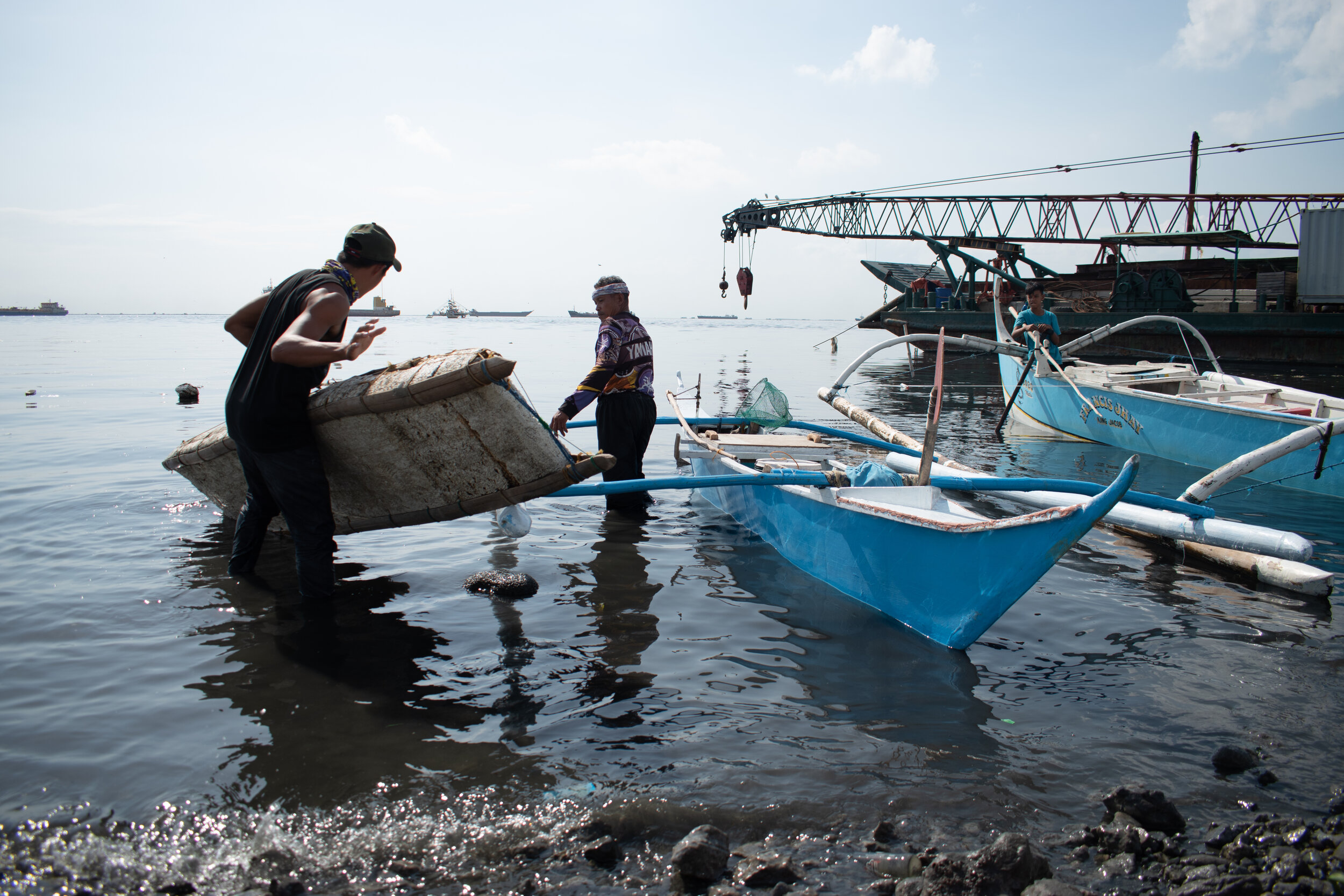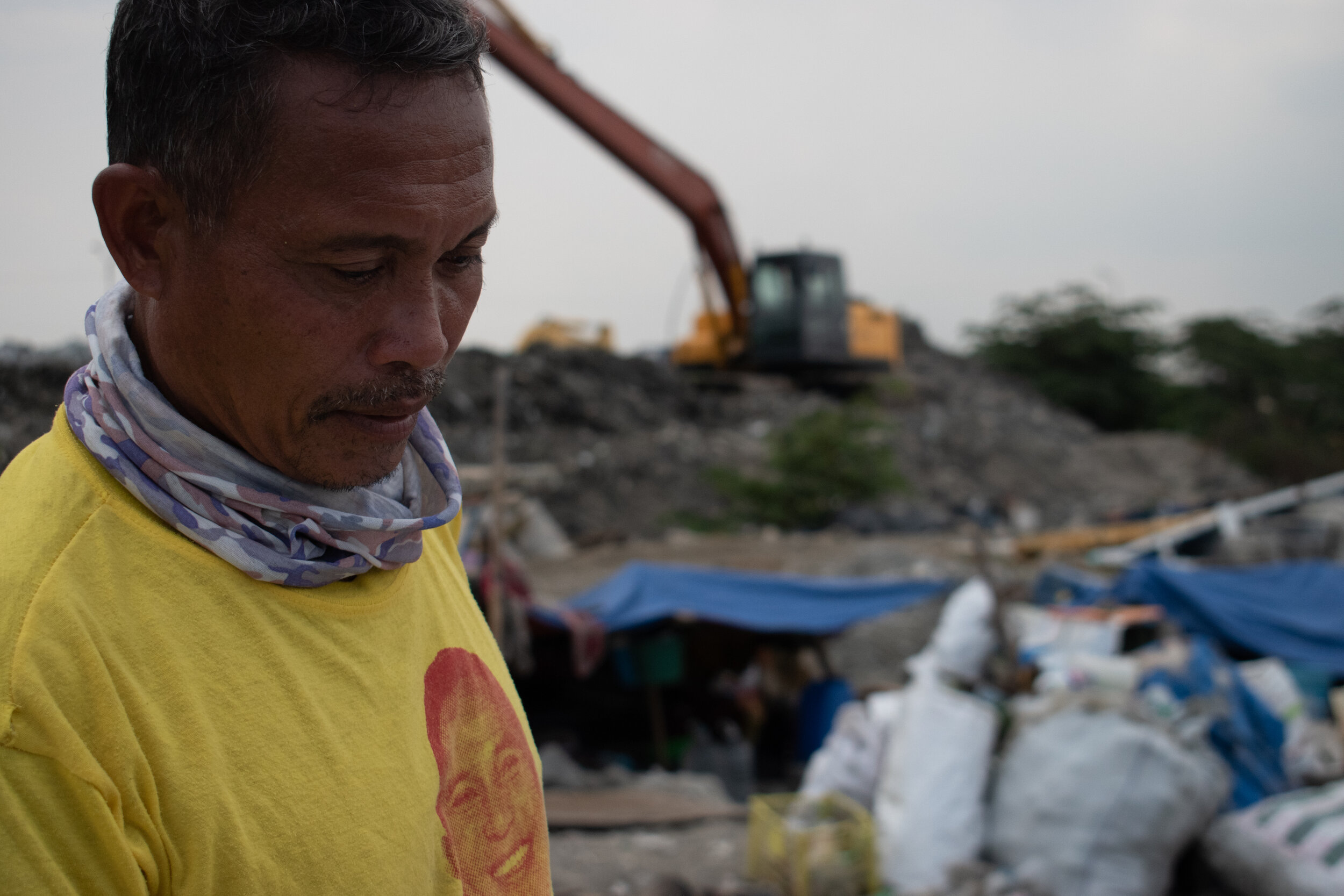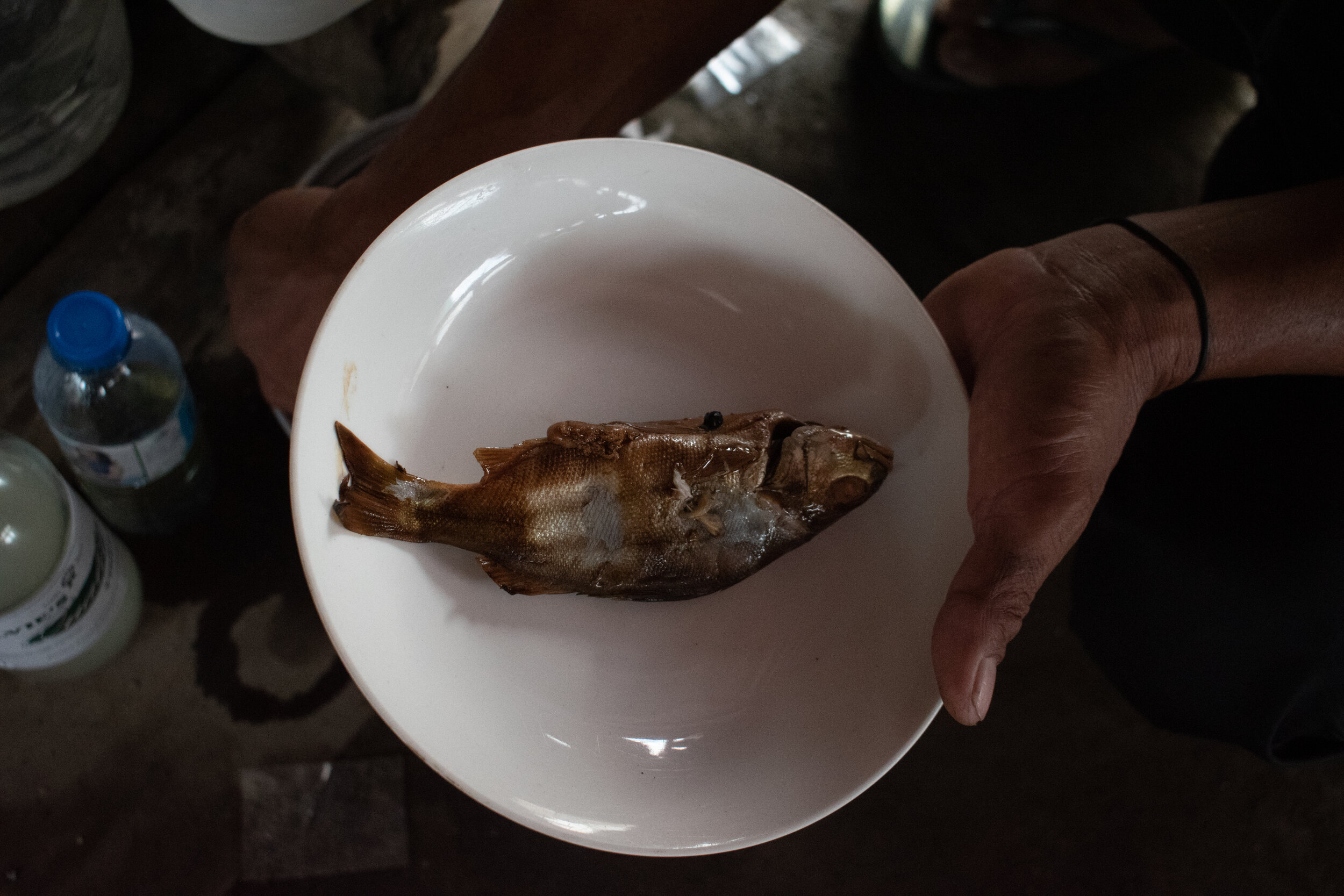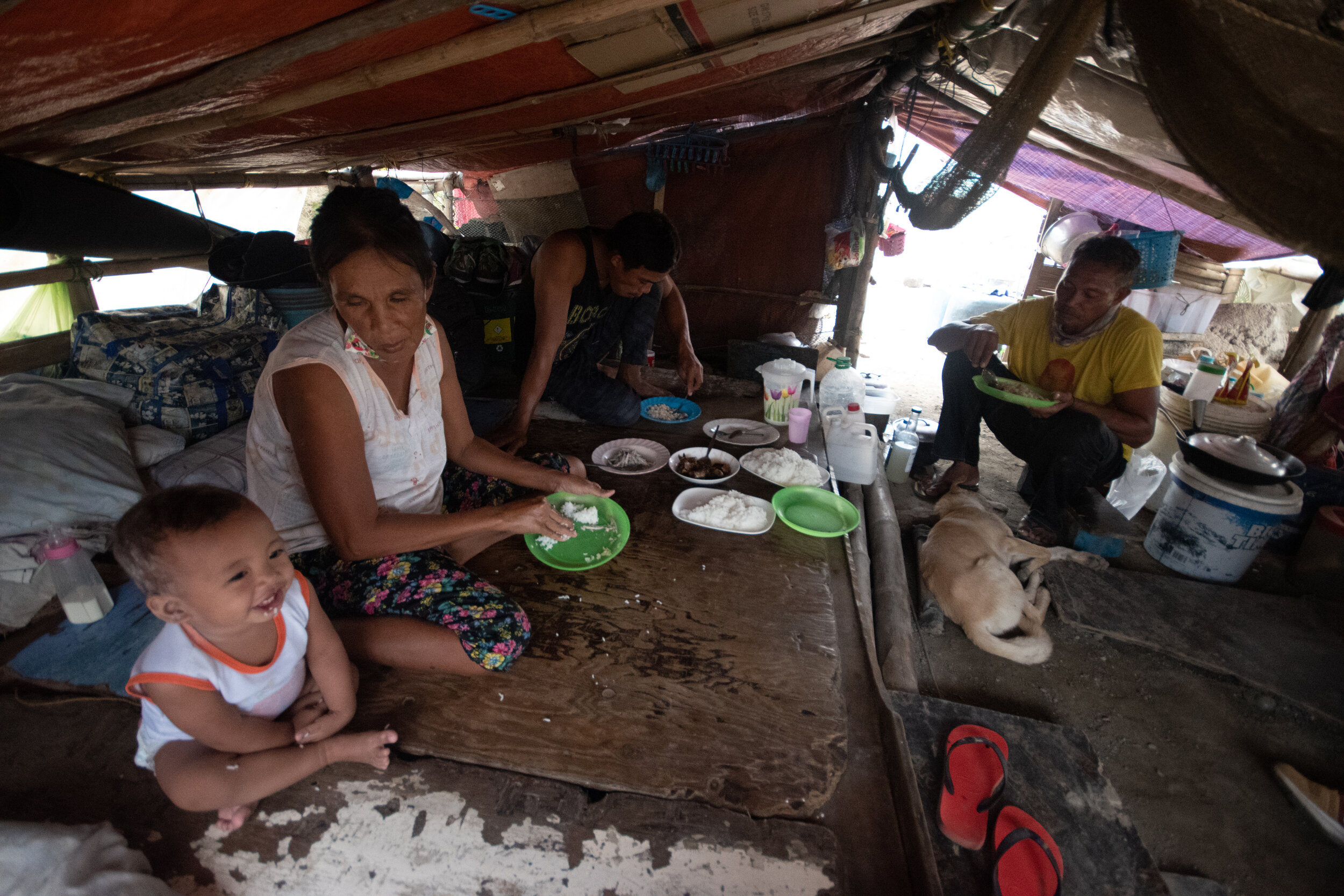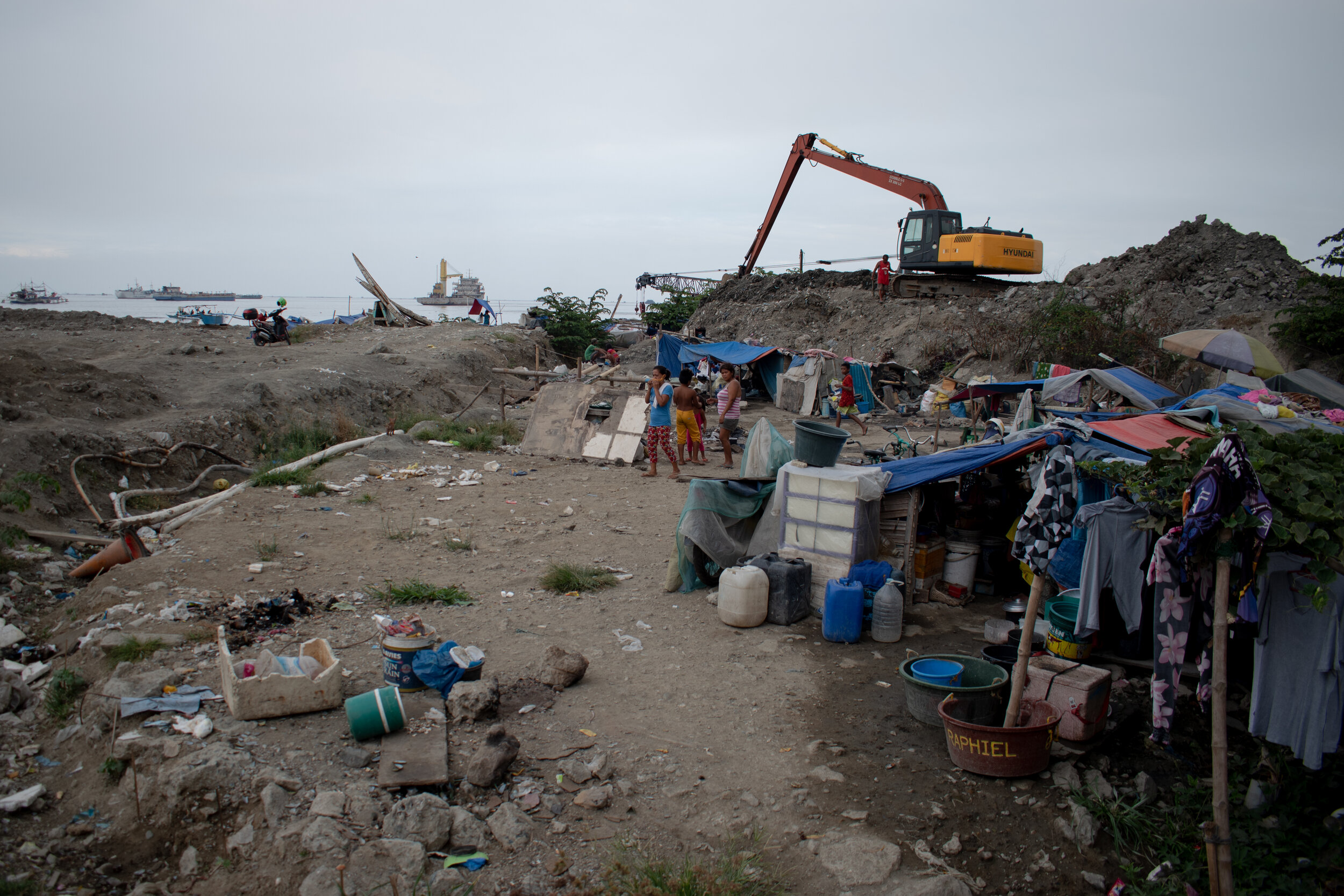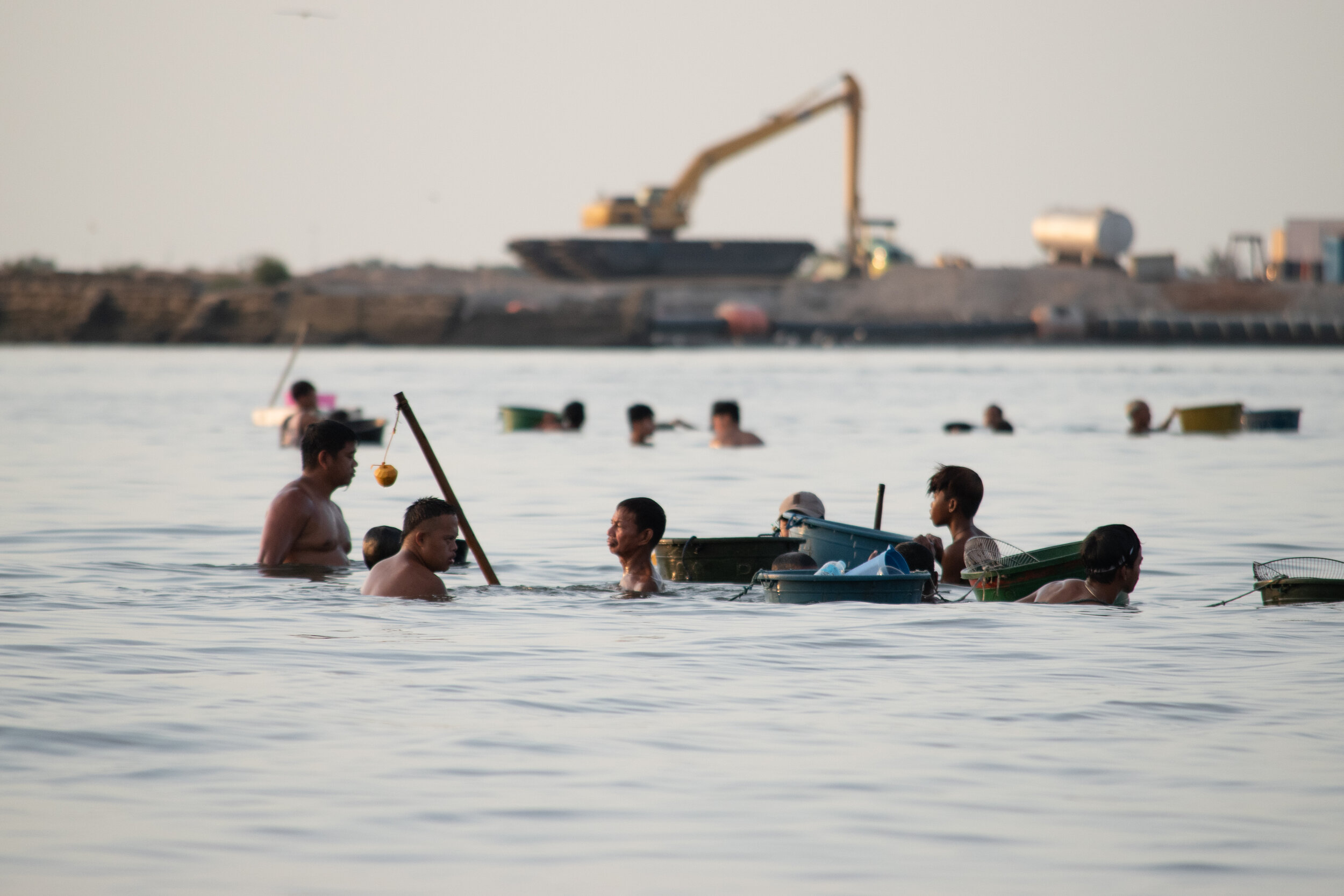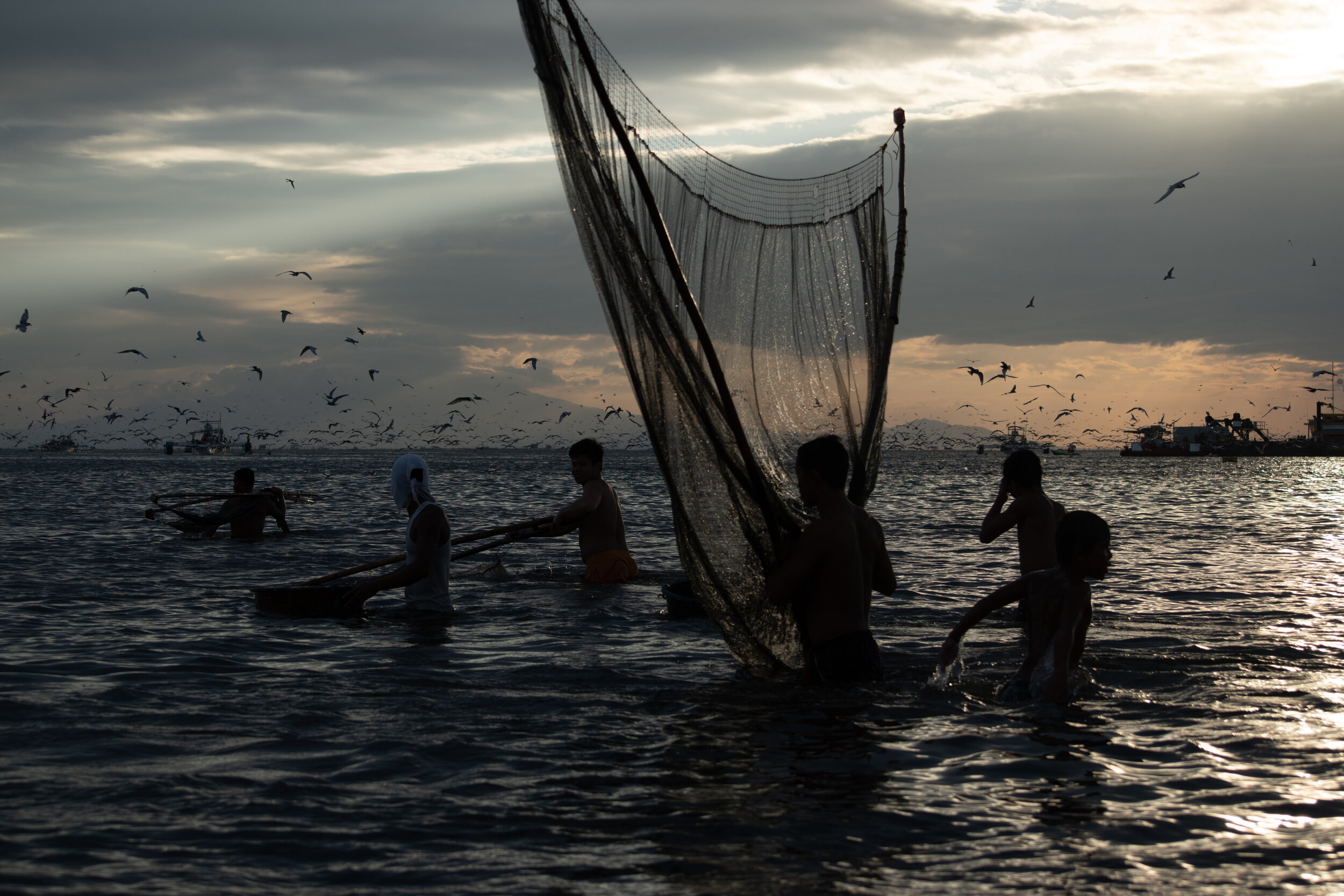Enduring the current: Manila Bay fishermen struggle to stay afloat
PHOTOS AND TEXT BY
Bernadette Uy
Early in the morning, the coastal community of Navotas is abuzz with small fishing boats unloading their catch. But Eduardo Dabandan, 49, lugs behind him several slabs of polystyrene foam held together by wooden sticks. For the past 10 years, this contraption has served as his main source of livelihood.
Eduardo grew up in Daram, Samar Province foraging for seashells. When he became a teenager, he went with older fisherfolk to the sea. He moved with his family to Navotas in 1997 and stayed there until 2010, when they were relocated to San Jose Del Monte in Bulacan after a fire razed their house.
Like a fish taken out of water, Eduardo found few opportunities for him in Bulacan. He offered his services as a sweeper at the relocation office. At first, the family was able to make ends meet with his P200 weekly salary. After a month, he realized it was not enough and opted to move back to Navotas to resume fishing.
Whatever money he saved, he sent to his family in Bulacan to pay for their house and other needs. His wife Maricris Dela Cruz, 45, and one of his sons later followed him to Navotas to help him earn money, while four other children stayed in Bulacan.
“Ayokong mawala yung bahay namin sa Bulacan, sayang naman. Para sa mga anak ko iyon, kaya heto tiis muna dito, nakakauwi na lang kami kapag may sobrang perang pamasahe (I don’t want to lose our home in Bulacan. It’s for my children, that’s why we persevere. We go home when there’s extra money for the fare),” Eduardo said.
He’s worried about the children, knowing that it’s different without parents around them.
When he got back to fishing in Navotas, Eduardo found a sidewalk where he could hang a hammock to rest on. Later, he and Maricris built a makeshift structure that became their temporary home. He’s worried they would be asked to move again to Bulacan with the implementation of the Manila Bay Sustainable Development Master Plan (MBSDMP), which involves reclamation. Their shack is just meters away from a backhoe being used for a reclamation project on the coast.
Eduardo is among the many fisherfolk relying on Manila Bay for their day-to-day subsistence, struggling amid the blooming commercial developments around them.
They are almost invisible to the rest of Metro Manila, whose collective memory of Manila Bay usually includes the scenic sunset, people strolling or jogging on the bay walk, and sailing boats at the yacht club. This is just a portion of the key harbor that spans eight provinces. Manila Bay is a strategic location for trade, livelihood, and other non-formal economic activities.
In 2017, the National Economic and Development Authority released the Manila Bay master plan and identified projects, programs and activities for the rehabilitation and development of the bay.
It has four “pillars”: Intercoastal Zone Management Framework, Priority Measures, Enabling Environments, and Optimizing Stakeholder Engagement. According to Rex Victor Cruz, leader of the team of experts in the Manila Bay Task Force, the master plan will fail without any one of the four pillars.
Cruz however clarified that the MBSDMP was not a “complete” plan. It provides guidance to local government units, national government agencies, and other stakeholders in charge of its implementation.
Devralin Lagos, a community worker who attended two meetings to craft strategies for the master plan in 2018, said fisherfolk needed to be consulted as their livelihoods would be affected by reclamation and other projects at Manila Bay.
“Based on my experience in Cavite and Bulacan, people are unaware of the master plan,” Lagos said. “[They should be consulted] if the project really aspires to reflect the concerns of stakeholders, not only of the development designers and government.”
Cruz said the master plan was not set in stone and could still be revised in three to five years. The Manila Bay Task Force is working on three scoping studies focused on liquid and solid waste management and preventing flooding.
Eduardo is hopeful after buying a new outrigger that finally replaced his makeshift boat. The money came from life savings. For him and other fisherfolk in Navotas, every day is a challenge to protect and sustain their livelihoods. Rather than sink them, the master plan, Eduardo said, should help keep them afloat.
This story is one of twelve photo essays produced during the Capturing Human Rights fellowship, a seminar and mentoring program jointly undertaken by the Philippine Center for Investigative Journalism and the Photojournalists' Center of the Philippines.




